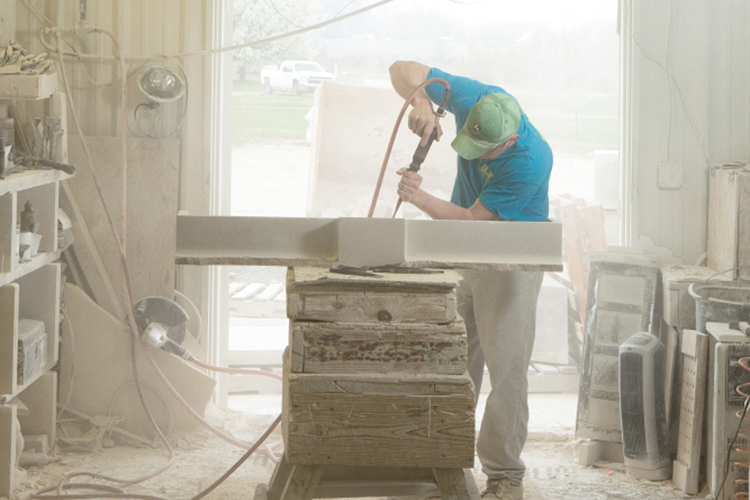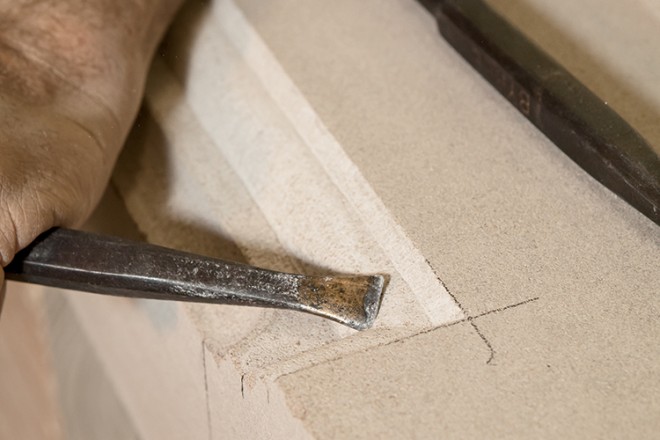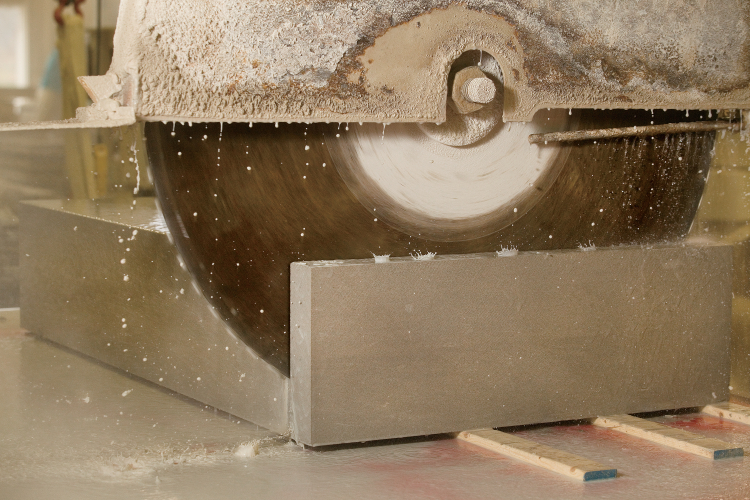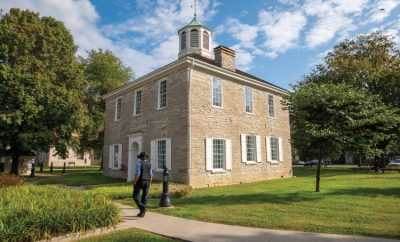Indiana Limestone is America’s Building Blocks
If you’ve ever attended a university, visited a symphony hall, worshiped in a cathedral or vacationed in Washington, D.C., chances are you’ve encountered Indiana limestone.
“Limestone put Indiana on the map – literally,” says Todd Schnatzmeyer, executive director of the Indiana Limestone Institute of America, located in Bedford.

Photo courtesy of Washington National Cathedral
Reputation Etched in Stone
Schnatzmeyer says since the first limestone deposits were quarried in 1827, the stone has been used to build tens of thousands of buildings and monuments across the country.
“You’ll see buildings made from Indiana limestone [on the campus of] Penn State,” he says. “A lot of notable universities around the country use a significant amount of limestone. You’ll also see limestone used to build public buildings – the performing arts centers and museums – like the Morton H. Meyerson Symphony Center in Dallas, Texas. There are a significant number of buildings in Washington, D.C. – the National Cathedral, the Treasury Building, the Federal Triangle – built with Indiana limestone.”
Schnatzmeyer’s organization represents 54 fabricating companies that cut and carve the stone, seven limestone quarries and a host of industry contributors, such as cladding designers, restoration contractors and equipment suppliers. Indiana’s Stone Belt stretches for about 30 miles through Owen, Monroe and Lawrence counties.

After the Great Chicago Fire of 1871, Indiana limestone was in great demand as building codes changed in urban centers. Schnatzmeyer says the stone is still one of the most-used building materials today.
“If you’re going to build a symphony center, an institutional building, or a college or university, Indiana limestone is going to be one of the top five recommended stones,” he says. “In Indiana, of course, because it’s a regional material, you have a lot of key projects, such as the Palladium in Carmel and Indiana University, which use an extensive amount of Indiana limestone.”
Brad Mobley, owner of Indiana Limestone Fabricators in Spencer, says architects and builders choose Indiana limestone over other building materials because the stone is both durable and malleable.
“Durability separates Indiana limestone from other building materials,” Mobley says. “In comparison to a granite or a marble, Indiana limestone can be shaped or profiled much more cost effectively, because the composition of the stone is much softer than marble or granite. And once you’re done shaping the stone and putting it on the building, it’s going to last 150 to 200 years with very little maintenance.”

A Cut Above the Competition
Mobley started his company in 1995 with wife, Michele, after having worked as both an estimator and sales manager for other limestone companies. Since then, the company has supplied limestone for some 3,000 construction projects, including the Herman B. Wells Library on the campus of the Indiana University, the Indianapolis War Memorial and, most notably, New York’s Yankee Stadium.
“That was 80,000 square feet of Indiana limestone. We worked two shifts for 15 months, and it was an exciting job to be a part of,” he says. “It turned out to be very successful, and everybody was really happy with it.”
Mobley’s art degree has undoubtedly contributed to his appreciation for limestone’s aesthetic qualities, but it’s his industry pedigree that has helped him succeed. Both his father and uncle worked as mill supervisors, and his grandfather was a stonecutter.
“I went to art school and then spent three years in the Army. My father, who still had friends in the industry, was able to introduce me to one of his former coworkers and through that connection, I was able to get a job as an estimator at one of the stone companies,” he says. “When I decided to start my own company, I already had some experience in drafting and estimating, and I had the fabrication technical experience from my father and uncle, which helped in setting up the operation and getting started.”

Mobley says the industry continues to thrive and stay competitive thanks in part to investments in new technology, such as the computerized, unmanned contouring and sawing machine his company uses, as well as the sustainability of the product.
“Essentially, fabrication is a process that utilizes diamonds and water. Our byproduct is limestone or lime, which we pile up and dry out,” he says. “Once it dries out, we spread out the slurry so it goes back to nature, so it really is an environmentally friendly material.”
Schnatzmeyer agrees that the industry is as strong as ever. When asked how the industry is faring, he’s quick to reply, “The industry is doing quite well, thank you. Most of the fabricators I’ve talked with in the last year have developed a backlog of projects, which means demand is still high, and the desirability for the stone is still there. And that speaks very well of our industry.”













 My Indiana Home is produced for Indiana Farm Bureau members. Our mission is to connect you with the food you eat, the Indiana farmers who grow it and a rural lifestyle that is uniquely Hoosier.
My Indiana Home is produced for Indiana Farm Bureau members. Our mission is to connect you with the food you eat, the Indiana farmers who grow it and a rural lifestyle that is uniquely Hoosier.
Leave a Comment